Hello!
A few weekends ago my husband, daughter, and I went to the Upland Lemon Festival, which according to their website, originally started as a “way of celebrating the city’s citrus industry origins.” We ate jumbo corn dogs (so big that I could only eat a little over half!), drank lemonades, and walked around the historic downtown. We found a stage with a cover band playing 90s music, so we sang along and danced. It was a fun way to start our summer here in SoCal!
Behind the Scenes: You Can’t Judge a Book by Its Cover
Marianne, a friend from writing group, recently lent me a book of Irish folklore. (Thanks, Marianne!) It’s called The Leprechaun’s Kingdom: The World of Banshees, Fairies, Giants, Monsters, Mermaids, Phoukas, Vampires, Werewolves, Witches, and Many Others by Peter Haining. While the cover suggests that it might contain children’s stories, it is more of an illustrated folklore encyclopedia of Irish faeries and the supernatural.
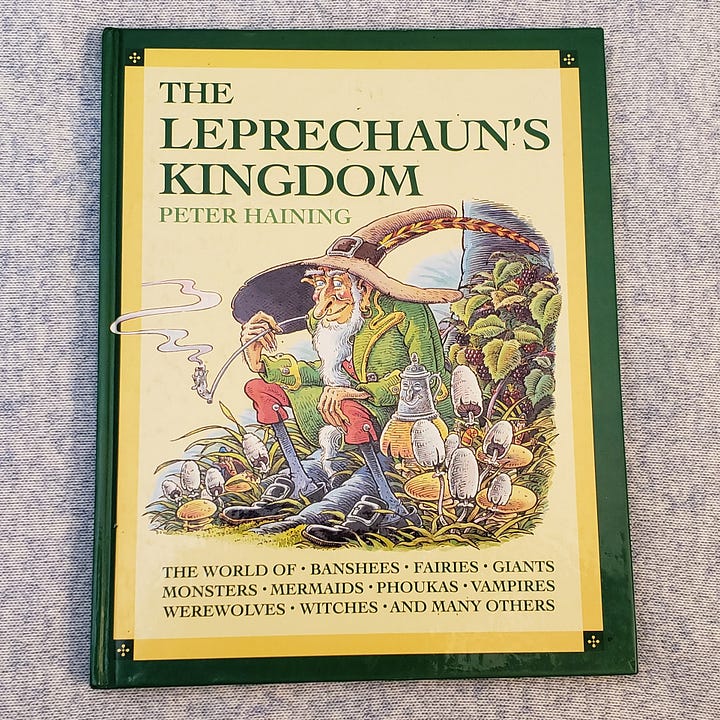
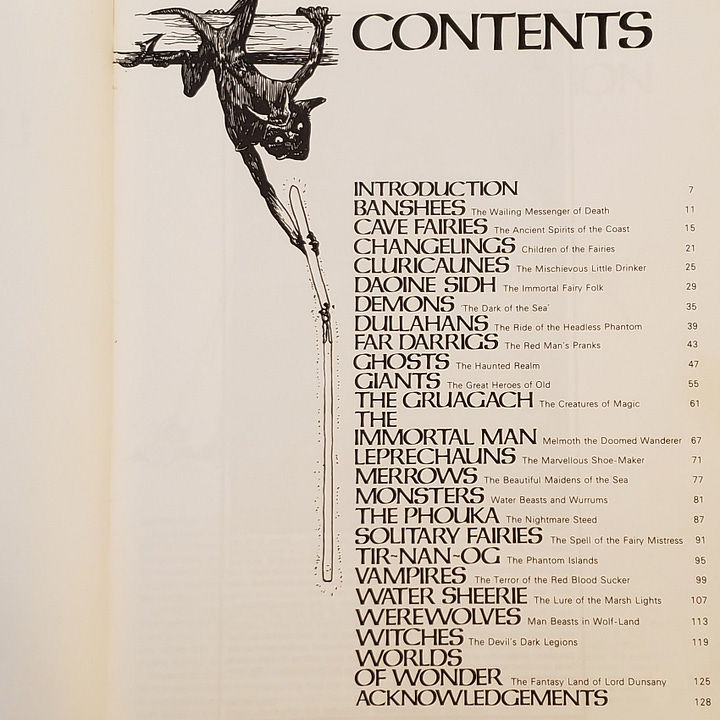
Haining gives notes and details on different faeries and supernatural creatures, then provides accompanying art and stories to “evoke the wonder.” Exactly what I like! He pulls mainly from books of Irish folklore, fairy tales, and literature for his textual information, but the art comes from “many and diverse Irish sources.”
After reading through it, I decided to use it as a launchpad to explore Irish faerie folklore, then share what I learned as this month’s folklore topic. So without further ado, let’s get started. :)
Exploring Folklore: An Introduction to Irish Faerie Folklore
In general, faerie folklore is quite complex and nuanced. And Irish faerie folklore seems similar to that of Wales (the Tylwyth Teg) and to Scotland (Seelie and Unseelie Courts). But as I looked through a few books on the topic, I discovered that the Irish faeries have a well-documented history and structure that I found fascinating.
As I will be mainly summarizing information that I researched for this post, I thought I’d just list the books I gathered notes from here, then simply refer to the author’s name when referencing their work:
The Leprechaun’s Kingdom: The World of Banshees, Fairies, Giants, Monsters, Mermaids, Phoukas, Vampires, Werewolves, Witches, and Many Others by Peter Haining
Ancient Legends, Mystic Charms & Superstitions of Ireland: With Sketches of the Irish Past by Lady Wilde
An Encyclopedia of Fairies: Hobgoblins, Brownies, Bogies, and Other Supernatural Creatures by Katharine Briggs
Please note that this post will be more of an overview on the subject of Irish faeries. We’ll look first at their mythological history, then we’ll examine Irish faerie structure, and finally we’ll look at a few specific examples of Irish faeries.
The Firbolgs and the Tuatha Dé Danann
According to Celtic mythology, the first two groups of people to inhabit Ireland were the Firbolgs and the Tuatha Dé Danann. The Firbolgs arrived in Ireland first, and Lady Wilde speculates that they were a culture of shepherds and agriculturalists. Peter Haining describes the Firbolgs as “large, grotesque creatures,” while Katharine Briggs calls them “giant-like” and compares them to the Titans of Greece. But while they are portrayed as a bit rough around the edges, they still seem to be viewed as a strong and magical people.
However, when the Tuatha Dé Danann arrived in Ireland, they engaged the Firbolgs in several battles. Briggs explains that after the Tuatha Dé Danann conquered and drove out the Firbolgs, the Firbolgs became the first faerie people of Ireland. The Firbolgs went into hiding, and Haining notes that as faeries, they took on a smaller stature, but they had the ability to shift their shape.
In the meantime, the Tuatha Dé Danann settled in more comfortably into Ireland. Wilde describes them as “… great necromancers, skilled in all magic, and excellent in all the arts as builders, poets, and musicians.” She also relates that they were very knowledgeable about herbs and their properties. But perhaps most notable were the horses the Tuatha Dé Danann raised. Wilde includes a vivid description of them in her book:
And the breed of horses they reared could not be surpassed in the world—fleet as the wind, with the arched neck and the broad chest and the quivering nostril, and the large eye that showed they were made of fire and flame, and not of dull, heavy earth. And the Tuatha made stables for them in the great caves of the hills, and they were shod with silver and had golden bridles, ….
The Tuatha Dé Danann ruled Ireland until they were conquered by a new group of people—the Milesians. Briggs writes that the Tuatha Dé Danann were “forced to take refuge under the grassy hills or in lands beneath the waters.” Like the Firbolgs, the Tuatha Dé Danann also became a faerie people. In time these faeries became known as the Daoine Sídhe.
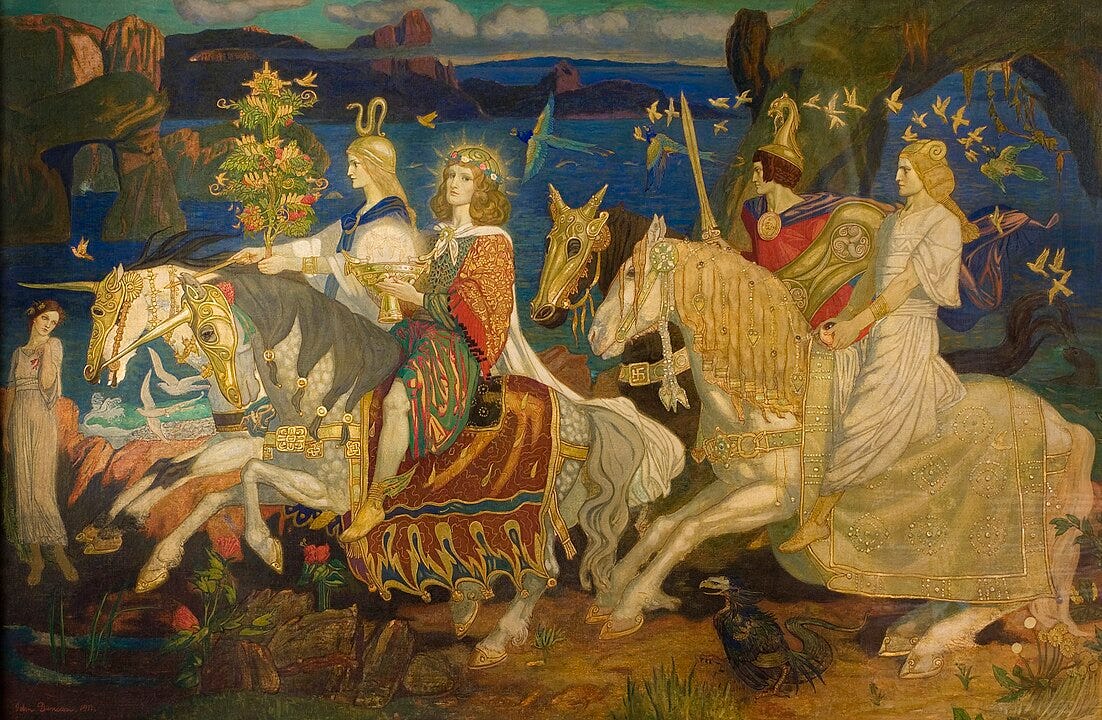
Before we learn about the Daoine Sídhe, though, I wanted to briefly look at Irish faerie structure. It seems to be a little different than the Scottish Seelie Court (good faeries) and Unseelie Court (bad faeries), which is popular in faerie fantasy fiction and role-playing games.
Trooping Faeries (Including Heroic Faeries) and Solitary Faeries
The Irish faeries are generally divided into two camps: the trooping faeries and the solitary faeries. Haining describes the trooping faeries in this way:
… [Trooping faeries] congregate in groups, dress in green, can be of varying sizes, and are mostly friendly disposed towards human beings. They are also said to love Hurling matches!
Briggs offers a similar portrayal, but she points out that the trooping faeries could be dangerous or sinister, depending on the group. She also notes that in addition to hurling, these faeries were “particularly fond of faction fights.”
Included with the trooping faeries are the heroic faeries. Briggs explains that the heroic faeries were the beautiful, faerie knights and ladies found in the medieval romances. In Celtic tales, they were generally human size and aristocratic in nature. They enjoyed similar interests as human aristocrats, such as hunting, music, dancing, playing chess, and riding in procession (known as the faerie rade). The heroic faeries included the Daoine Sídhe of Ireland and the Seelie Court of Scotland.
Not surprisingly, the solitary faeries tended to keep to themselves. They did share some similar characteristics with each other, though. Solitary faeries often dressed in red and were considered to be “malignant or ominous creatures.” In Ireland, the most well-known solitary faeries include the Leprechaun, the Far Darrig, and the Cluricaune.
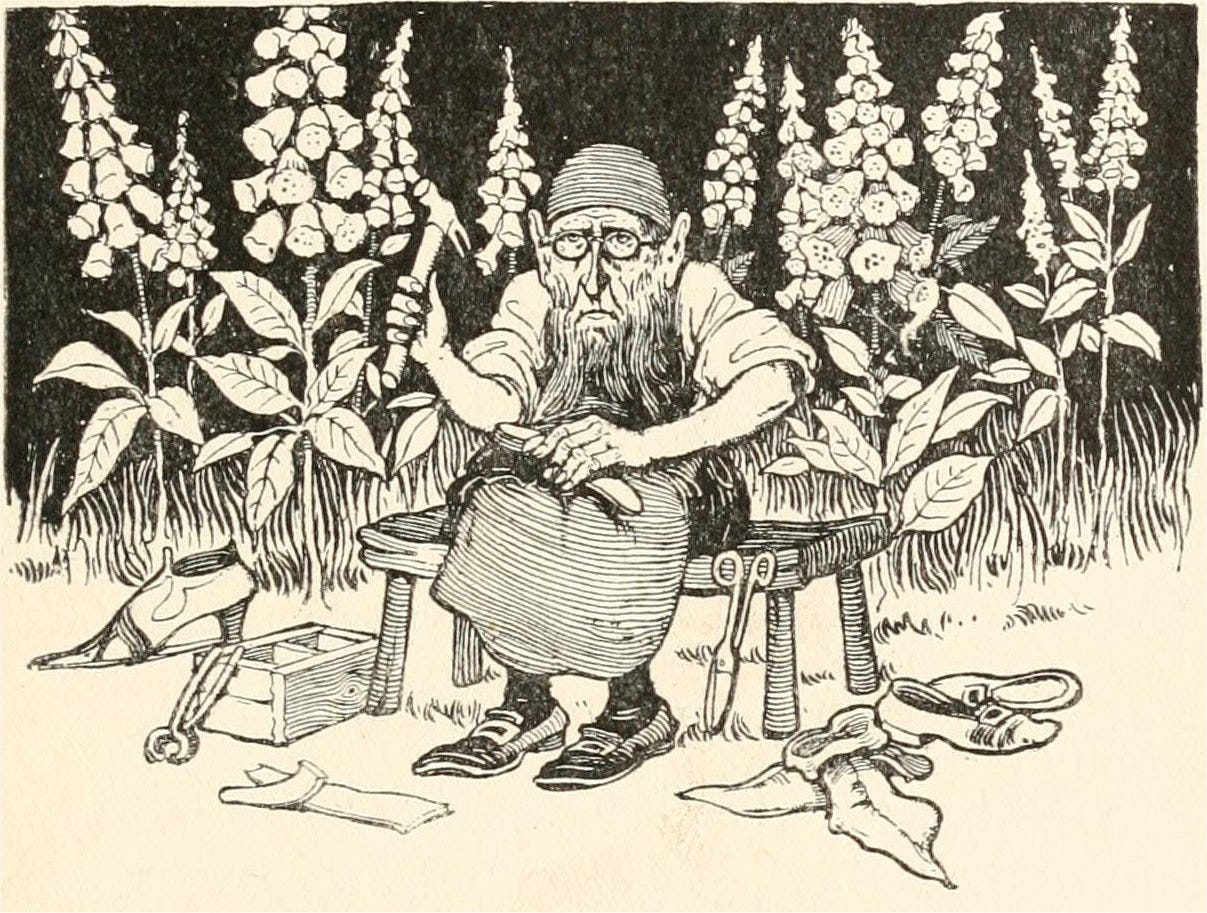
The Daoine Sídhe
As I mentioned above, the Daoine Sídhe were heroic (trooping) faeries who enjoyed aristocratic pastimes. And while it was often believed that they were the faerie people that emerged from the conquered Tuatha Dé Danann, both Briggs and Haining offer up a second origin story for them. They explain that another tradition suggests that the Daoine Sídhe were fallen angels. Haining quotes from an old saying, indicating that these fallen angels were “not good enough to be saved, nor bad enough to be lost.”
In her book, Lady Wilde eloquently describes the culture of the Daoine Sídhe—they were courtly and lived in palaces in mountain caves or under hills, they could change their form, they were immortal “until the last day comes,” and through magic they obtained lovely things … including people. Wilde writes that the Daoine Sídhe often carried off beautiful mortal children and woman.
When a child was taken, the Daoine Sídhe would leave a changeling in its place. Generally, the mortal child was raised with the faeries in one of the palaces and wedded to a faerie once they reached adulthood. Similarly, a mortal woman might be taken for marriage with a faerie. Wilde also describes the children born from a faerie and mortal union. She writes:
The children of such marriages have a strange mystic nature, and generally become famous in music and song. But they are passionate, revengeful, and not easy to live with. Every one knows them to be of the Sidhe … by their beautiful eyes and their bold, reckless temperament.
I found this description fascinating—I haven’t come across much folklore regarding grown children born from a faerie and mortal marriage.
Lady Wilde also gives a darker reason why the Daoine Sídhe might steal mortal women and children. It was sometimes believed that the faeries were required to pay a tithe to the Devil every seven years and may have used mortals for that purpose.
The Cluricaune, the Far Darrig, and the Leprechaun
I thought we’d finish up by looking at a few solitary faeries. According to Haining, the Cluricaune is “an old, withered little man who delights in spending his time getting drunk in wine cellars!” Not only did he enjoy partaking of the household alcohol at his leisure, but he would frighten off any person who came to the cellar to do the same without the permission of the master of the house. Apparently he could get so carried away, that the family would move out—but care needed to be taken in order to keep him from sneaking into a wine barrel and secretly moving with them.
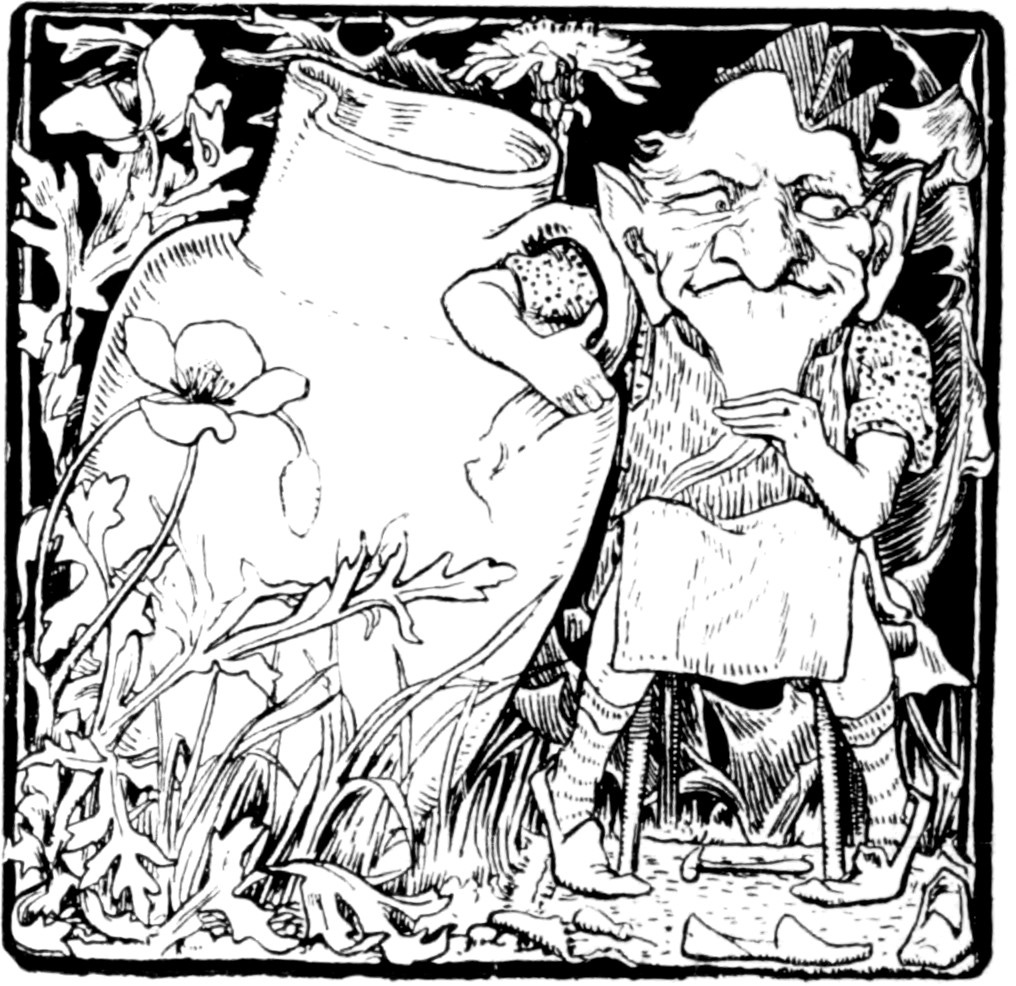
The Far Darrig was another solitary faerie who was full of darker mischief. In some ways he shares traits with hobgoblins, but he is described to be more gruesome with his pranks. Both Haining and Briggs describe similar stories of the “Far Darrig in Donegal.” Briggs summarizes the tale in this way:
… [it] is a version of ‘The Story-Teller at a Loss’, in which a man who fails to produce a story on request suffers a succession of macabre experiences which prove to be illusions designed to provide him with material for a story.
Hmm, seems very Black Mirror or The Twilight Zone to me. ;) Haining also makes note of the Far Darrig’s ability to alter his voice. At times it might sound like waves, birdsong, or angelic music. The Far Darrig is strongly associated with the color red. His commonly described attire includes a red coat and cap. And the term Far Darrig (Fear Dearg, in Irish) means “Red Man.”
I feel like the most well-known of the Irish solitary faeries is the Leprechaun. The Leprechaun was generally considered to be a faerie shoemaker, and Haining explains that in most traditional tales he is portrayed working on a single shoe. He was a mischievous faerie who enjoyed pranks, but he also knew where hidden treasure was buried. It behooved a person to believe in the Leprechaun, for if he liked you, he might take you to the spot where the pot of gold was buried. But Lady Wilde warns that the Leprechaun also had a dangerous side:
… the Leprehauns can be bitterly malicious if they are offended, and one should be very cautious in dealing with them, and always treat them with great civility, or they will take revenge and never reveal the secret of the hidden gold.
I hope you enjoyed learning about Irish faeries with me! Thanks again to Marianne for lending Peter Haining’s book to me.
As ever, thank you for subscribing and reading.
All the best,
Steph
PS: I recently listened to an interesting interview on Tracy Nicholas’ podcast, the Folkloring Podcast. She spoke with Neil Byrne about Fey Earth, a tabletop role-playing game he’s developing. He’s worked hard to research European folklore in order to incorporate authentic folklore as opposed to simply depicting faerie denizens as they appear in popular culture. Here’s a link in case you’d like to listen to the interview.


Excellent article as always, Steph! The Leabair Gabála Érenn or Book of Invasions texts translated by R.A.S. McAlister include many of the tribes you mentioned who allegedly invaded Ireland.
The Tuath Dé Danann, the most interesting tribe of people, named after the goddess Danú, inspired me on to write the first couple of chapters of a yet to be finished novel. And that all began with the Leprechaun book.
If you ever want to go down that rabbit hole here’s the link: https://celt.ucc.ie/indexLG.html